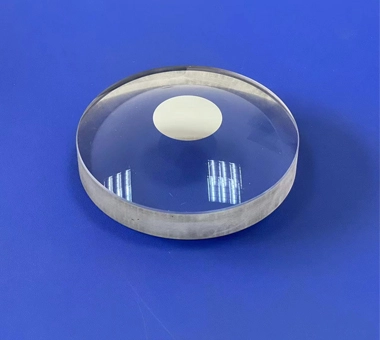
Call Us
86-755-82924037
Call Us
86-755-82924037Optical windows are flat, transparent optical elements that allow light to pass through while protecting sensitive components or environments from external factors. They are made from materials like glass, quartz, or sapphire, chosen for their transparency at specific wavelengths and resistance to environmental conditions. Optical windows are crucial in applications ranging from cameras and telescopes to scientific instruments and industrial machinery, where they provide a clear, protective barrier without significantly affecting the light’s path or quality. Their design and material composition are tailored to meet the requirements of specific applications, ensuring optimal performance and durability.
Optical windows and lenses are fundamental components in optical systems, but they serve different purposes and are designed accordingly. Optical windows are flat, transparent pieces that protect sensitive optical elements from environmental factors without altering the path of incoming light. They are characterized by their ability to transmit light with minimal distortion. Lenses, on the other hand, are curved optical components specifically designed to refract (bend) light, focusing or dispersing light beams to form images or to adjust the beam’s path. The key difference lies in their function: windows safeguard and transmit light as it is, while lenses modify the light’s direction to achieve a desired optical effect.
When selecting an optical window, several critical factors must be considered to ensure optimal performance for your specific application. Material choice is paramount, as different materials offer varying degrees of transparency across different wavelength ranges, as well as differing in thermal and mechanical properties. The operating wavelength and required transmission efficiency dictate the material and any necessary coatings, such as anti-reflective coatings to minimize light loss. Environmental durability, including resistance to temperature changes, humidity, and chemical exposure, must align with the application’s conditions. Additionally, mechanical strength is crucial for withstanding physical stresses without degrading or altering optical performance. Lastly, the window’s size and thickness should be compatible with the mounting requirements and optical system design to ensure proper integration and functionality. Contact Solar Valley optical lens wholesale for more selections.


